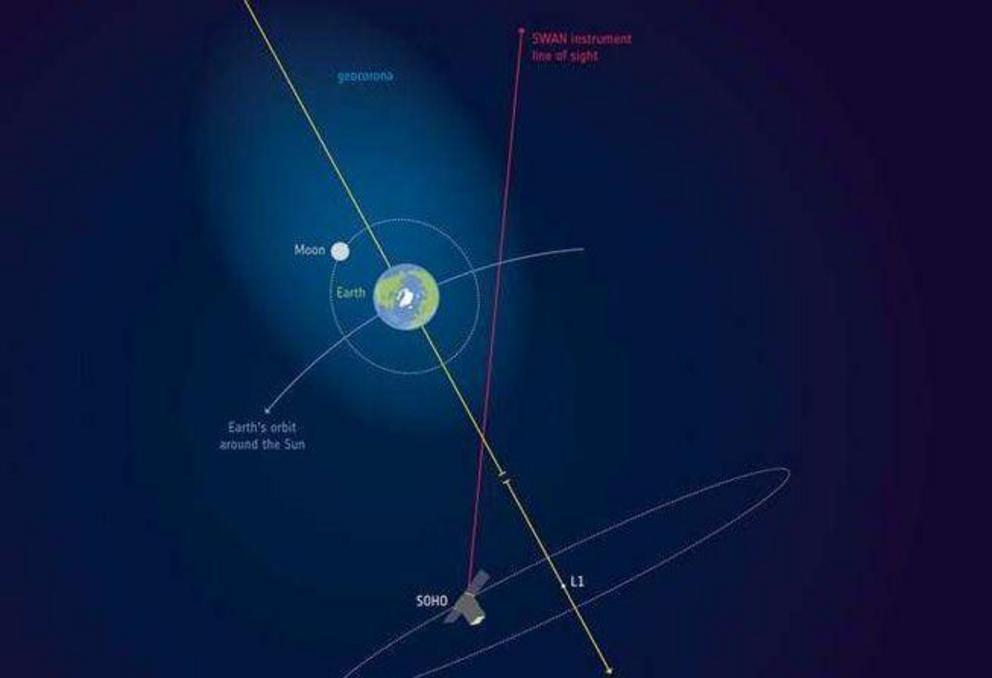Earth's atmosphere stretches further than we thought possible — to the Moon and beyond
This is the extent of Earth's 'geocorona,' stretching out like a comet's tail beyond the moon.
From our vantage point here on Earth and within Earth's orbit, it's sometimes difficult to get a clear view of our planet's entire atmospheric system, because we're on the inside looking out. While we've sent spacecraft out beyond our planetary system, they aren't usually equipped with instruments designed for looking back at Earth from afar.
So you shouldn't blame scientists for underestimating the reach of our planet's atmosphere many times over.
It turns out that Earth's gaseous layers reach up to 630,000 kilometers away, or 50 times the diameter of our planet. To put this in perspective, that places the moon well within Earth's atmosphere, reports Phys.org.
Another way of thinking about it: this essentially means that no humans have ever left Earth's atmosphere, even counting astronauts who walked on the lunar surface.
It's an astounding and surprising find, one that researchers only just discovered after pouring over data collected by the ESA/NASA Solar and Heliospheric Observatory, or SOHO, which orbits some 1.5 million kilometers from Earth towards the sun. The satellite is equipped with an instrument known as SWAN, which has a hydrogen absorption cell capable of detecting the sparse outer layer of Earth's atmosphere, which is pretty much just a cloud of hydrogen in its furthest reaches.
"The moon flies through Earth's atmosphere," said Igor Baliukin, lead author of the paper presenting the results. "We were not aware of it until we dusted off observations made over two decades ago by the SOHO spacecraft."
Welcome to the geocorona
The cloud of hydrogen that makes up the far-out atmosphere is known as the geocorona, and it actually glows under a certain wavelength of ultraviolet light when the Sun is shining on it, almost like an ultraviolet rainbow. It's this gleam that SWAN was uniquely capable of detecting, to trace the true outline of Earth's geocorona.
The outer geocorona is thin, with only about 0.2 atoms per cubic centimeter at the moon's distance, so it wouldn't be noticeable to most spacecraft flying through it. Still, it's there.
"On Earth we would call it vacuum, so this extra source of hydrogen is not significant enough to facilitate space exploration," said Baliukin.
Even so, the find might put some limitations on our orbiting telescopes, or any future telescopes that might be placed on the moon. "Space telescopes observing the sky in ultraviolet wavelengths to study the chemical composition of stars and galaxies would need to take this into account," added team member Jean-Loup Bertaux.
The good news is that this find could give us new ways of detecting potential reservoirs of water beyond our solar system, because our hydrogen exosphere is most likely a result of having so much water vapor closer to our planet's surface. We might therefore recognize other Earth-like planets based upon their gleaming geocoronas.
All in all, it's just mind-boggling to consider that for all of our space exploration, we've only just now identified the outer limits of our own planet's atmosphere. And to think, not a single human has ever traveled beyond it.
We've got a lot left to discover from our little blue dot.

